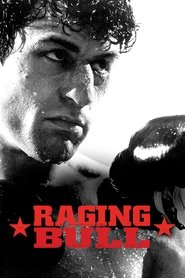A work of art. It’s a transition piece between Scorsese’s earlier examinations of violent, isolated men and his later ensemble pieces, which examine violent men in communities of violent men. I think there’s a subtle difference.
I’ve often wondered what it was that attracted Scorsese to Lamotta. We know it wasn’t boxing. I wonder if it was the perfectionism: the drive Lamotta had to be perfect, at the cost of everything else to him.
The final frame is an interesting quote. I read somewhere that Paul Schrader didn’t like the Bible verses, because it implies that Lamotta found redemption. Schrader said that both Scorsese and De Niro think that Lamotta did find redemption in their film, but Schrader disagrees. Lamotta never redeems himself. He never learns.
I agree with Schrader: very obviously, nothing has changed for Lamotta. He blames others for his failures, because in his worldview, he’s the best — and he’s always been the best. But the world never saw it in him.
And that makes me wonder if that’s the element a younger, more brash Scorsese agreed with. Perhaps he felt jilted by Hollywood. His planned retirement from American filmmaking and the failure of New York, New York had him so defeated he was hospitalized for drug abuse and depression. I wonder if he looked at Lamotta and thought, “There’s a man they beat down.”
Only Marty could ever tell us, obviously. But I often wonder.
As for the movie, it’s practically flawless in its examination of a man whose violence towards others explodes out from the violence he enacts upon himself. But it’s also not fun to watch. It’s a long, gruelling two hours. Scorsese would figure out how to make people like this “fun” with Goodfellas. Despite that, there is something in De Niro’s portrayal of Lamotta that feels human, particularly for males. He is the worst of us.
